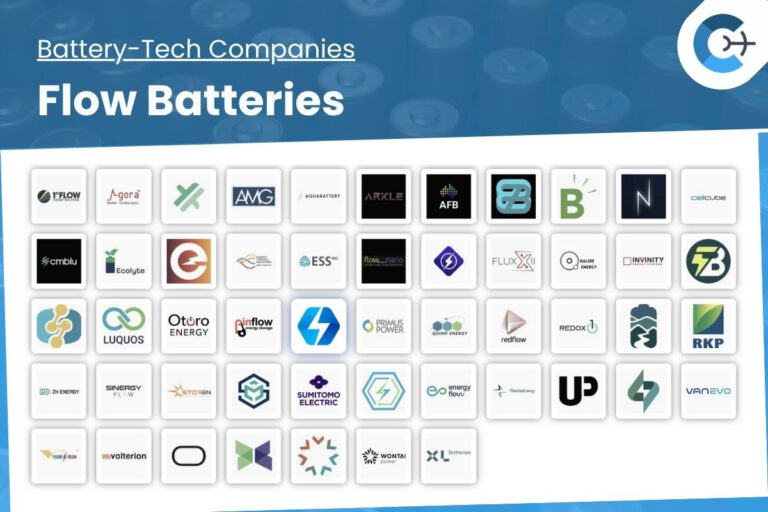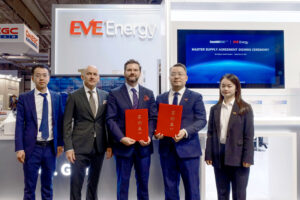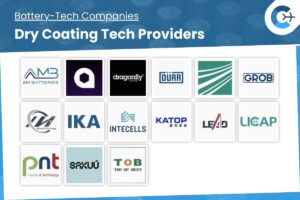Key Players in Flow Battery Technology

1st Flow Energy Solutions
1st Flow Energy Solutions pioneers advanced VRFB systems using directed flow field technology. Their innovative, scalable, and safe battery solutions support efficient renewable energy applications worldwide.
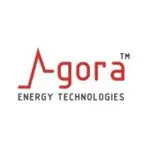
Agora Energy Technologies
Agora Energy Technologies in Vancouver develops Carbon Dioxide Redox Flow Batteries that convert industrial CO₂ emissions into efficient energy storage. Their innovative solutions support renewable energy integration and reduce greenhouse gases, advancing sustainable energy.

Allegro Energy
Allegro Energy is an Australian cleantech leader developing sustainable battery technology through its proprietary Microemulsion Flow Battery. It delivers long-duration, utility-scale energy storage for electric transport and grid support.

AQUABATTERY
AQUABATTERY, established in 2014 in the Netherlands, develops advanced saltwater flow batteries for long-duration energy storage. Their scalable, non-toxic technology supports a global shift toward renewable, sustainable energy solutions.

ARKLE Energy Solutions
ARKLE Energy Solutions, based in Bengaluru, India, delivers safe and sustainable Vanadium Redox Flow Battery (VRFB) systems. Their advanced energy storage technology supports renewable integration, grid stability, EV charging, and telecom infrastructure, driving the global energy transition with reliable and eco-friendly solutions.

Australian Flow Batteries
Australian Flow Batteries delivers innovative Vanadium Redox Flow Battery systems for renewable energy storage, offering scalable, safe, and durable solutions tailored for remote communities, mine sites, and grid integration.

Bettery
Founded in 2018 by the University of Bologna, Bettery Srl is an Italian startup based in Massafra. They develop sustainable energy storage solutions with their patented NESSOX lithium-oxygen batteries, offering high energy density and cost-effective options for residential and large-scale applications.

BioZen Batteries Inc.
BioZen Batteries Inc., based in Santa Barbara and founded in 2019 by PhD scientists, develops advanced carbon-based redoxolytes for Redox Flow Batteries. Their sustainable, safer energy storage solutions enable long-duration renewable energy integration and grid stabilization.

Bryte Batteries
Bryte Batteries, headquartered in Trondheim, Norway, develops sustainable flow battery systems for industrial and commercial use in the Nordic region. Their modular, non-toxic technology supports renewable energy integration, offers flexible power and storage options, and ensures high safety with minimal environmental impact.

CarbeniumTec LLC
CarbeniumTec LLC pioneers metal-free organic redox flow batteries for sustainable, long-duration energy storage. Originating from University of Arizona research, its innovative, eco-friendly technology mitigates renewable intermittency across grid, commercial, and residential applications.
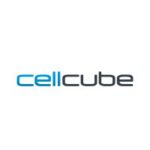
CellCube
CellCube Energy Storage GmbH, a division of Enerox GmbH, specializes in Vanadium Redox Flow Battery technology with over 14 years of expertise and 130+ global installations. Their scalable, long-duration energy storage solutions support renewable integration, grid stability, and off-grid power for commercial, industrial, and utility sectors.

CMBlu Energy
CMBlu Energy, based in Alzenau, Germany since 2014, develops innovative Organic SolidFlow battery systems using carbon-based materials. Offering sustainable, safe, and scalable long-duration energy storage, their solutions serve utility-scale and industrial applications as eco-friendly alternatives to traditional lithium-ion batteries.

Ecolyte GmbH
Ecolyte GmbH, based in Graz, Austria, develops sustainable energy storage using organic redox flow batteries. Founded in 2022, the company leverages vanillin-derived electrolytes and AI technology to create scalable, eco-friendly battery systems for renewable energy applications, supporting global carbon reduction.

Elcora Advanced Materials
Elcora Advanced Materials, based in Nova Scotia, specializes in extracting and processing key battery metals like vanadium, manganese, and copper. Utilizing graphene and vanadium redox flow technologies, Elcora delivers sustainable solutions for electric vehicles and renewable energy markets.

Elestor B.V.
Founded in 2014 in Arnhem, Netherlands, Elestor B.V. develops large-scale hydrogen bromine flow batteries for sustainable energy storage. Their scalable solutions integrate renewables into existing grids. Backed by €30 M funding, Elestor is evolving into an engineering-driven enterprise under new leadership in 2025.

Energy Storage Industries Asia Pacific
Energy Storage Industries Asia Pacific is an Australian leader in renewable storage solutions using innovative iron flow battery technology. The company manufactures, installs, finances, and maintains integrated, sustainable systems for utility, commercial, and industrial applications.

ESS Tech, Inc.
ESS Tech, Inc., headquartered in Wilsonville, Oregon and listed on NYSE as GWH, leads in long-duration iron flow energy storage. Utilizing sustainable materials like iron, salt, and water, ESS’s scalable solutions support grid reliability and renewable energy integration, driving the transition to a low-carbon future.

Flow-nano
Flow-nano, an Italian start-up spun off from X-nano and IIT, specializes in nanostructured electrodes for VRFBs. Their patented NanoJeD platform enhances battery performance, driving cost-effective Long Duration Energy Storage solutions.

FlowCellutions
FlowCellutions specializes in state-of-health diagnostics for flow batteries, leveraging electrochemistry, precision sensing, and machine learning to enhance performance and sustainability. Their innovative solutions reduce industrial carbon emissions and optimize energy storage systems.

Flux XII Inc.
Flux XII Inc. is a Madison-based energy startup that develops organic redox flow battery systems. Its innovative design provides safe, scalable, and sustainable long-duration energy storage, enhancing grid security.

Halide Energy (former CuRen)
Halide Energy, based in Espoo, Finland, develops sustainable Copper Redox Flow Batteries for long-duration energy storage. Their scalable and modular technology supports renewable energy integration by efficiently storing excess wind and solar power. Backed by Aalto University and Business Finland, Halide Energy drives innovation in renewable energy solutions.

Invinity Energy Systems
Invinity Energy Systems, based in London since 2020, manufactures utility-grade vanadium flow batteries for large-scale energy storage. Their ENDURIUM™ systems ensure over 25 years of safe, efficient operation. Partnered with major investors, Invinity drives the global shift to renewable energy.

Jena Flow Batteries GmbH
Founded in 2023 in Germany, Jena Flow Batteries GmbH specializes in sustainable metal-free redox flow battery systems using organic-based electrolytes. As a subsidiary of Suqian Time Energy Storage, they provide scalable and safe energy storage solutions for renewable integration and industrial applications.

Jolt Energy Storage Technologies
Jolt Energy Storage Technologies, based in Michigan, innovates grid-scale energy storage with proprietary all-organic redox flow batteries. Their sustainable approach modernizes renewable integration while reducing reliance on scarce minerals.

KEMIWATT
KEMIWATT, founded in 2014 in Rennes, France, develops sustainable organic Redox Flow Batteries. Their innovative AORFB technology uses biodegradable materials for efficient energy storage in grids and renewable systems. Renowned for modular design and environmental responsibility.

Luquos Energy
Founded in 2020 in Hong Kong, Luquos Energy develops innovative sulfur-based flow batteries using aqueous electrolytes and earth-abundant materials. Their safe, cost-effective, and sustainable technology offers long cycle life and is applied in renewable energy storage, grid support, and EV infrastructure.

Otoro Energy
Otoro Energy, headquartered in Boulder, Colorado, specializes in affordable, safe flow battery systems for grid-scale energy storage. Established in 2020, their innovative technology utilizes sustainable materials, providing long-duration solutions that advance the clean energy transition.

Pinflow energy storage
Pinflow Energy Storage, founded in 2017 in Prague, specializes in vanadium redox flow batteries for stationary energy applications. Their scalable and eco-friendly systems offer long lifespans, high efficiency, and customizable designs, advancing sustainable energy storage solutions.

PolyFlow Energy
PolyFlow Energy, headquartered in Hangzhou, China, specializes in vanadium redox flow battery technology for large-scale energy storage. Utilizing their proprietary VersaFlow™ and VersaVolt™ systems, they provide reliable, scalable solutions that enhance renewable energy integration for utilities and industrial applications.

Primus Power Corporation
Primus Power Corporation, based in Hayward, California since 2009, specializes in grid-scale energy storage with its durable zinc bromide flow batteries. Their EnergyPod 2 offers long-duration, fade-free performance for industrial, commercial, and utility applications, enhancing grid reliability and renewable energy integration.

Proxhima
Proxhima, based in Italy, specializes in advanced vanadium flow battery technology for scalable and long-lasting stationary energy storage. The company excels in facilitating global market entry, managing contracts, and ensuring successful renewable energy project implementations.

Quino Energy
Quino Energy, founded in 2021 in California, develops organic quinone-based water flow batteries for grid-scale energy storage. Originating from Harvard research, their eco-friendly technology offers a safe, scalable alternative to lithium-ion batteries, targeting commercial and utility applications.

R.Flo
R.Flo is a Ukrainian energy storage company specializing in iron flow batteries for commercial, industrial, and utility sectors. Utilizing iron salts in liquid electrolytes, their sustainable technology offers efficient, long-duration storage. With 78 years of combined expertise, R.Flo aims to enhance renewable energy integration and reduce global carbon emissions by 50%.

Redox One
Redox One delivers cutting-edge integration solutions that empower the healthcare industry through advanced, secure technology. Our versatile applications streamline interoperability and data exchange, enhancing patient outcomes and operational efficiency.

Redox Storage Solutions BV
Redox Storage Solutions BV, based in the Netherlands, specializes in Vanadium Redox Flow Batteries for renewable energy storage. Their VRFBs offer high safety, long lifespans, and scalable solutions for residential to industrial applications, effectively integrating solar and wind energy.

Rivus Batteries
Founded in 2019 as a Chalmers University spin-off, Rivus Batteries in Gothenburg develops sustainable organic flow batteries for large-scale energy storage. Their metal-free, water-based technology enhances renewable energy reliability and minimizes environmental impact. Backed by key investors, Rivus targets utility-scale applications.

Rongke Power
Rongke Power, founded in Dalian, China in 2008, delivers vanadium flow battery technology for long-duration, utility-scale energy storage. With 3 GWh deployed globally, their safe systems boost grid resilience and support renewable integration.

Shenzhen ZH Energy Storage Technology Co., Ltd.
Shenzhen ZH Energy Storage Technology Co., Ltd. is a global provider of flow battery systems. Leveraging advanced VRFB and iron-sulfur technologies, it manufactures cost-effective, high-performance components for safe, long-duration energy storage and grid-scale applications.

Sinergy Flow
Founded in 2022 in Milan, Sinergy Flow develops sustainable redox flow batteries using abundant materials like sulfur from petrochemical waste. Their long-duration (20+ hours) energy storage supports up to 90% renewable integration. Backed by 360 Capital Partners, the company offers cost-effective, eco-friendly solutions for stable power grids.

StorEn Technologies Inc.
StorEn Technologies Inc., founded in 2017 and based in Greenville, SC, specializes in advanced vanadium redox flow batteries for residential, commercial, and industrial applications. Leveraging proprietary technology and multiple patents, StorEn delivers sustainable, long-lasting energy storage solutions that support the renewable energy transition globally.

Stryten Energy
Stryten Energy, based in Alpharetta, GA, is a leading U.S. energy storage manufacturer specializing in advanced lead, lithium, and vanadium battery technologies. Producing nearly 15 GWh annually, they serve transportation, power, and military sectors with sustainable, high-performance solutions.

Sumitomo Electric Industries
Sumitomo Electric Industries, a Japanese industrial leader since 1897, excels in cutting-edge electrical, electronic, and energy systems. It pioneers sustainable VRFB battery technology designed to enhance grid stability and support decarbonization.

Tectonic Power Pvt. Ltd.
Tectonic Power Pvt. Ltd., founded in 2022 in Ahmedabad, specializes in redox flow battery technology for sustainable energy storage. Their scalable systems enhance renewable energy integration and grid stability, offering over 20 years of lifespan and high recyclability for residential to industrial applications.

TerraFlow Energy
TerraFlow Energy, headquartered in Texas, pioneers grid-scale storage with advanced organic flow batteries. Their water-based, non-flammable systems offer safe, scalable, long-duration solutions for renewable integration.

Tharam-Thiran Green Energy Flow
Tharam-Thiran Green Energy Flow, in Tamil Nadu, India, pioneers Sulfur-Iron redox flow battery technology for long-duration industrial energy storage. Its scalable, safe, and affordable solutions optimize renewable integration.
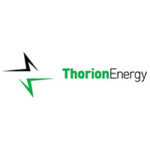
Thorion Energy
Thorion Energy, headquartered in Perth, is Australia’s first producer of Vanadium Redox Flow Batteries. Utilizing a patented chloride-based vanadium electrolyte, they deliver compact, scalable, and safe energy storage solutions for renewables.

Unbound Potential
Founded in January 2023 in Thalwil, Switzerland, Unbound Potential develops advanced membrane-less flow batteries for large-scale energy storage. Using sustainable, water-based electrolytes, their efficient technology supports renewable energy integration. Backed by experts and key partnerships, Unbound Potential delivers scalable, cost-effective solutions for industrial and data center applications.

Vanaflow Energy Systems
Vanaflow Energy Systems, headquartered in Zaragoza, Spain, designs and manufactures advanced vanadium redox flow batteries for large-scale energy storage. Their scalable, long-lasting VRFBs support renewable integration and grid stabilization, providing safe and reliable solutions for utilities and industrial applications.

VANEVO GmbH
VANEVO GmbH, based in Oldenburg, Germany, pioneers advanced energy storage with patented Redox-Flow technology. Their scalable solutions integrate renewables and stabilize grids for industrial and e-mobility use.

VANITEC LIMITED
Vanitec Limited, established in 2008 in the UK, is a non-profit advancing vanadium applications for sustainable energy. Focused on breakthrough battery technologies including VRFBs, the organization fosters global research, collaboration, and industrial innovation.

VFlowTech
VFlowTech, established in 2018 in Singapore, specializes in modular vanadium redox flow batteries for scalable, long-lasting energy storage. Their PowerCube system supports renewable energy integration in grid storage, EV charging, and industrial applications. Committed to energy equity, VFlowTech drives sustainable solutions globally.

VisBlue
VisBlue A/S of Aarhus, Denmark, specializes in sustainable vanadium redox flow batteries for renewable energy storage. Since 2014, their scalable and recyclable VRFB technology enhances solar and wind integration, providing efficient, long-lasting solutions for industrial, commercial, and residential applications.

Volta Energy Technologies
Volta Energy Technologies, founded in 2017 and based in Warrenville, IL, is a venture capital firm focused on battery and energy storage technologies. Partnering with institutions like MIT and Stanford, Volta invests in innovations such as solid-state electrolytes and silicon-anode batteries to advance the global energy sector.
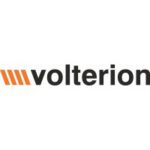
Volterion
Founded in 2015 and based in Dortmund, Volterion GmbH & Co. KG specializes in advanced vanadium redox flow batteries for commercial bulk energy storage. Their scalable, efficient systems support applications like renewable storage, grid stabilization, and EV charging, leveraging innovative manufacturing and sustainable solutions.

VoltStorage
VoltStorage GmbH in Munich since 2016 specializes in sustainable energy storage with its innovative Iron Salt Battery technology. Serving energy providers and industrial enterprises, VoltStorage offers scalable, long-duration, and environmentally responsible solutions backed by significant investment and global expertise.

VRB Energy
VRB Energy, a subsidiary of Ivanhoe Electric, specializes in large-scale vanadium redox flow batteries. Their VRB-ESS® system offers over 25 years of reliable, sustainable energy storage for utility and industrial applications, supporting renewable integration with enhanced safety and durability.

VSUN Energy
VSUN Energy, a subsidiary of Australian Vanadium Limited since 2016, specializes in scalable vanadium flow battery systems for long-duration energy storage. Based in West Perth, they provide safe, reliable solutions for utility, commercial, and residential applications, enhancing renewable integration and grid stability.

Wontai Power Co., Ltd.
Shanghai-based Wontai Power Co., Ltd. develops advanced vanadium flow battery systems. With a focus on R&D, scalable production, and sustainability, they deliver innovative solutions driving global carbon reduction and clean energy transition.

XL Batteries
XL Batteries, a technology leader, develops safe, low-cost grid-scale Organic Flow Battery systems. Founded by Columbia scientists in 2019, its scalable design meets diverse industry needs, driving renewable energy transitions with patented, sustainable chemistry.
Flow Battery Technology Overview
Flow batteries are a rechargeable energy storage system designed with scalability, long-duration operation, and improved safety in mind. Unlike traditional batteries that house active materials in a single cell, flow batteries store energy in two separate liquid electrolytes held in external tanks. This design allows the system to be scaled up for applications such as grid support, renewable energy integration, and micro-grid operations.
Key Characteristics of the Technology
- Storage Flexibility: Energy capacity is determined by the volume of the electrolyte storage tanks, making it possible to easily adjust performance for large-scale applications.
- Longevity: The separation of the chemical reactions from the power-generating cell stack results in a high number of charge and discharge cycles, which extends the usable life of the system.
- Safety Advantages: The use of liquid electrolytes and reduced risk of thermal events provide an added layer of protection compared to some other battery chemistries.
- Adaptability: The technology allows for independent optimization of energy storage and power output, fitting a range of applications from brief load support to long-duration energy supply.
- Environmental Considerations: Many flow battery designs incorporate materials with reduced environmental impact, and systems can be constructed for easier recycling than some conventional batteries.
Technology Classifications / Types
Flow battery systems can be categorized based on the chemistry and configuration of their electrolytes:
- Vanadium-Based Systems: These systems use vanadium ions in different oxidation states, which help maintain consistency in performance through a reversible reaction mechanism.
- Iron-Based Flow Batteries: Developed by companies such as ESS Tech, these systems make use of iron, salt, and water. Their formulation supports multi-decade operations and presents a sustainable option with recyclable materials.
- Organic Flow Batteries: This type employs organic compounds dissolved in the electrolyte.
- Alternative Aqueous Electrolyte Systems: Some approaches involve non-toxic, water-based solutions that work independently of traditional metal ions, an area currently under investigation by startups including Rivus Batteries and Luquos Energy.
Companies like Flux XII and Quino Energy are exploring systems that incorporate engineered carbon-based molecules or water-based quinones to achieve cost-effective and safe energy storage.
Development and Commercialization Challenges
Progress in flow battery systems focuses on improving electrolyte chemistry, enhancing modular design, and refining system integration with energy grids. Developers face challenges such as reducing production costs, increasing overall energy efficiency, and ensuring long-term reliability under varying operational conditions. Technical hurdles include the development of membranes that allow effective ion exchange and the optimization of flow dynamics to maximize current generation. Additionally, market acceptance and regulatory requirements remain vital issues as companies work to expand the application range of their systems.
Recent Developments and Examples
- Sumitomo Electric Industries (Japan) has focused on vanadium redox flow batteries tailored for grid applications, working to improve efficiency and reduce system expenses.
- Invinity Energy Systems (UK/Canada) offers non-degrading vanadium flow battery systems aimed at smart grid integration and renewable energy projects, benefiting from combined expertise after merging established companies.
- ESS Tech (US) continues to advance iron flow battery technology, showcasing systems designed for operational lifespans exceeding 25 years and utilizing recyclable materials to tackle safety issues.
- VRB Energy (Canada/China) is known for its multi-megawatt vanadium systems, which support large-scale grid operations and the integration of renewable power sources.
- Emerging companies such as Flux XII (US) and Quino Energy (US) are testing organic and water-based quinone solutions, with efforts concentrated on providing cost-effective and safe storage options.
- Startups Rivus Batteries (Sweden) and Luquos Energy (China) are also contributing new approaches by investigating organic and alternative aqueous electrolytes intended to simplify scalability while meeting significant energy storage demands.
The ongoing research and industrial projects illustrate a commitment to cost reduction, improved performance, and safety enhancements that support the growing need for reliable energy storage solutions in a wide array of applications.

